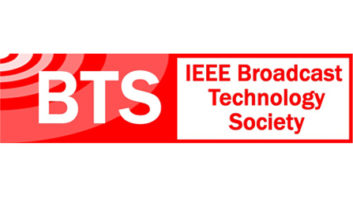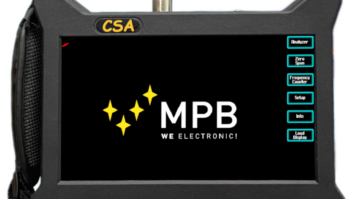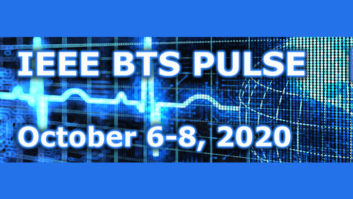This article originally appeared in TV Technology
IEEE-USA has petitioned the FCC for a spectrum ruling to spur new technologies.
In its Petition for Declaratory Ruling IEEE-USA “respectfully urges the Federal Communications Commission (FCC) to issue a declaratory ruling that petitions or applications related to technologies and services in the frequency spectrum above 95 GHz be classified presumptively as ‘a new technology or service’ in the context of the terms of Section 7 of the Communications Act of 1934, as amended.”
IEEE-USA stated that at present no FCC service rules address any applications for services that utilize spectrum above 95 GHz and that the only use permitted of this spectrum is with experimental licenses. IEEE-USA noted that while U.S. licensed amateur radio operators above Novice Class are allowed to use 122–123 GHz, 134–141 GHz, 241–250 GHz and all frequencies above 275 GHz and that ISM (Industrial, Scientific, Medical) use is permitted at 122.5 GHz and 245 GHz, neither of these provisions allow for the sale and use of communications equipment by non-amateur licensees or unlicensed users.
The petition states, “IEEE-USA believes that this lack of service rules inhibits market entry for new and innovative technology and applications above 95 GHz. It also inhibits the acquisition of private sector funds for the research/development/testing necessary to move technology from technical journals into the commercial marketplace.”
The IEEE-USA petition lists several technologies that would benefit from service rules for this spectrum. One of three is a novel 135 GHz antenna technology from a Singapore government-funded project that “can support wireless speed of 20 GBps — more than three times faster than the fastest Wi-Fi.”
The Petition specifically requests the FCC make a Declaratory Ruling that new applications for the use of technology above 95 GHz:
● Presumptively qualify as “new technology” under Section 7
● Are subject to the opponents’ burden test of Section 7(a)
● Are subject to the Section 7(b) one-year time frame for determining whether the proposal is in the public interest.
The FCC and the wireless industry have made lack of spectrum a major issue. The reality is that the only way you can expand spectrum exponentially is to move to higher frequencies. Even if wireless carriers took the entire 470 MHz–698 MHz TV band, that’s only a bit more than twice what broadcasters gave up in channels 52–69 after the DTV transition (228 MHz versus 108 MHz). If demand for wireless broadband services is growing as fast as former FCC Chairman Julius Genachowski and his National Broadband Plan claim, this piddling amount of spectrum would be gobbled up in a few years as people stream more video at higher resolution over a wireless connections.
The only solution to this insatiable demand for broadband (assuming the trend is correct) is to move to higher frequencies. Satellite carriers know this and are moving to Ka band — ViaSat is using 1,500 MHz of Ka band satellite spectrum along with spot beams to to deliver its Exede Internet service and other private IP communications service on ViaSat-1. Some of the new technologies being developed above 95 GHz could provide a terrestrial solution to the spectrum crunch, initially for backhaul and later to consumer devices, in densely populated areas where demand is highest.











